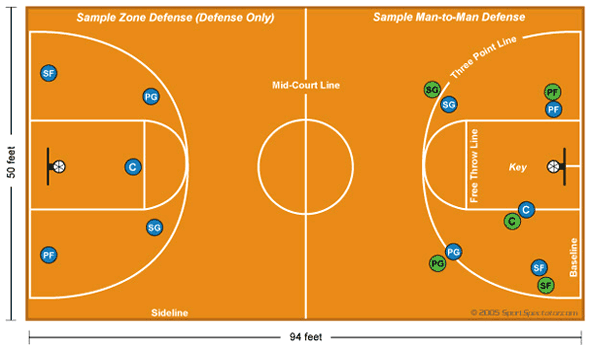Positions
Although the rules do not specify any positions whatsoever, they have evolved as part of basketball. During the first five decades of basketball's evolution, one guard, two forwards, and two centers or two guards, two forwards, and one center were used. Since the 1980s, more specific positions have evolved, namely:
- point guard: usually the fastest player on the team, organizes the team's offense by controlling the ball and making sure that it gets to the right player at the right time
- shooting guard: creates a high volume of shots on offense; guards the opponent's best perimeter player on defense
- small forward: often primarily responsible for scoring points via cuts to the basket and dribble penetration; on defense seeks rebounds and steals, but sometimes plays more actively
- power forward: plays offensively often with their back to the basket; on defense, plays under the basket (in a zone defense) or against the opposing power forward (in man-to-man defense)
- center: uses height and size to score (on offense), to protect the basket closely (on defense), or to rebound.
The above descriptions are flexible. On some occasions, teams will choose to use a three guard offense, replacing one of the forwards or the center with a third guard. The most commonly interchanged positions are point guard and shooting guard, especially if both players have good leadership and ball handling skills.

No comments:
Post a Comment